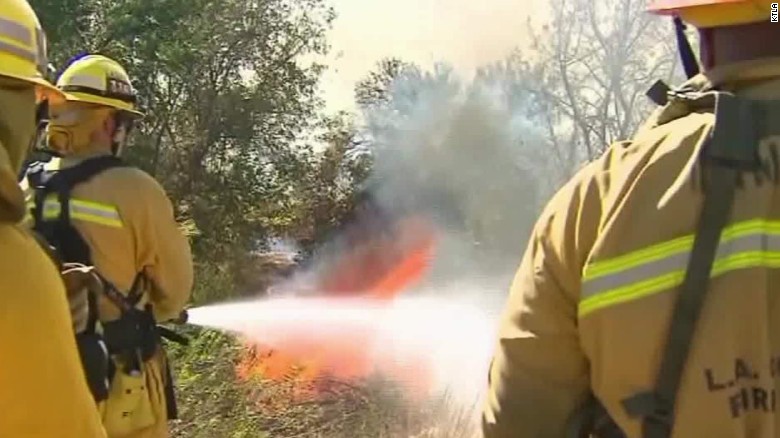Our next post today will introduce you to Stuart Scott, Founder/Director of the United Planet Faith & Science Initiative. Yesterday we recorded a very compelling interview with Stuart which will get released this month.
Stuart, during the show, talks hauntingly about some of the potential ramifications we face, short and long-term, as carbon builds and the environment changes. The story below is, perhaps, the type of the iceberg. Wildfires might be the least of our concerns as Mother Nature churns unhappily from our gluttony and waste.
Stuart talks about being a "climate warrior". He fears much about our future and the future of all living beings. Can we use signs of danger, such as uncontrolled wildfires that blaze a large trail of destruction, as motivation to more quickly embrace sustainable changes? It certainly motivates us.
More flames, higher costs

25,000 firefighters battle fire in 10 states 01:15
(CNN)Rick Tryder isn't a firefighter, but he found himself deployed for a few days this week to help suppress one of the 105 uncontained large wildfires burning in the United States, mostly in the West. "Rick is fighting a wildfire in Wyoming and I'm a nervous wreck," Tryder's girlfriend, Chrissy Macholl, shared on Twitter. "How do families of firefighters do it?!"
Tryder works as an outdoor recreation planner for the Bureau of Land Management, but with the wildfires pushing all the firefighting agencies to the limit, his agency tapped him for a turn in the field.
"They trained him for fire because they needed more people," Macholl said.
Wildfire suppression is just one of many duties for the Bureau of Land Management, but it's not uncommon for nonfirefighter employees to undergo fire training in case extra personnel are needed, according to Randy Eardley, the bureau's deputy chief for external affairs.
"We as a national firefighting community are spread very thin," Eardley said. "We do reach out to internal employees, as a lot of those people do maintain some fire qualifications."
The trend of an increasing number of large wildfires is taxing the nation's capabilities to efficiently put out the blazes.
The U.S. Forest Service, which bears the largest share of the national firefighting responsibilities, reported this month that for the first time, the agency is devoting more than half its total budget to fighting fires, up from 16% 20 years ago. The percentage could rise to two-thirds of its funding by 2025, the Forest Service said in a report.
The increasing cost of fighting wildfires affects the other duties of the Forest Service, the agency said.
The many agencies tasked with combating wildfires coordinate through the National Interagency Fire Center. The Forest Service, which operates under the Department of Agriculture, put out the warning, but other agencies said they feel the pinch, too. Like the Bureau of Land Agency, which has nonfire related projects interrupted when its personnel are reassigned to fire duty.
"It is a challenging fire season for everybody and all agencies are having to spend increasing amounts of funding on wildfires," said John Segar, chief of the fire management branch at the U.S. Fish and Wildlife Service.
"It's all hands on deck," he said. "Everybody is working. There are more fires than people available and we are all working as hard as we can."
The latest move has been to call the military to assign active duty troops to firefighting operations.
Reallocating resources
The number of wildfires and number of acres burned vary from year to year, but overall both numbers are trending upward.
As the number of fires increase, so do the costs to battle them, the Forest Service said in its report.
The biggest problem, the Forest Service said, is the number of "mega-fires" that burn each year. One to two percent of wildfires account for up to 30% of the annual fire costs, the agency said.
At the Forest Service the number of fire staff has swelled since 1998, but the nonfire positions have seen cutbacks.
Climate Change
The Forest Service report cites climate change for the increased wildfires.
Other government reports have concluded the same.
"Climate change has led to fire seasons that are now on average 78 days longer than in 1970," according to the Forest Service report. "The U.S. burns twice as many acres as three decades ago and Forest Service scientists believe the acreage burned may double again by midcentury."
The U.S. Global Change Research Program predicted that wildfires will increase, especially in the Southwest.
"These changes are often driven by multiple factors, including changes in temperature and drought patterns, wildfire, invasive species and pests," the report said.

No comments:
Post a Comment